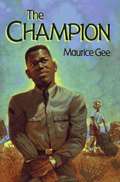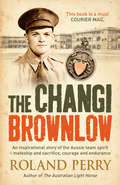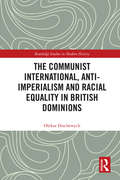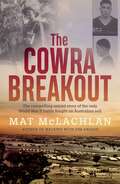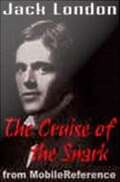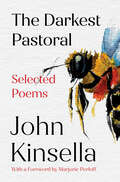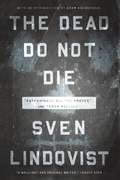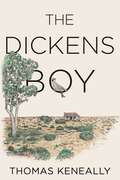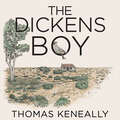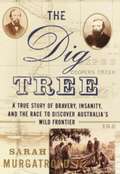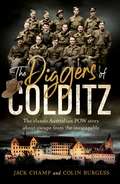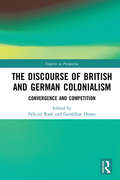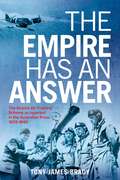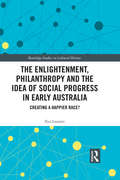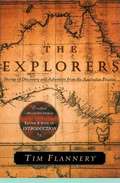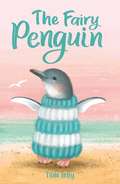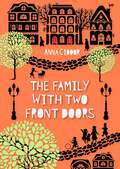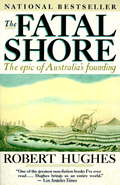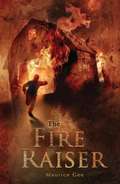- Table View
- List View
The Champion
by Maurice GeeIn 1943 twelve-year-old Rex sees his quiet New Zealand village dramatically changed by the arrival of a black American soldier on leave from the war.
The Changeover: A Supernatural Romance
by Margaret MahyWhen her little brother seems to become possessed by an evil spirit, fourteen-year-old Laura seeks the help of the strangely compelling older boy at school who she is convinced has supernatural powers.
The Changi Brownlow
by Roland PerryThis is the moving, powerful and surprising story of a group of Australian POWs who organise an Australian Rules Football competition under the worst conditions imaginable - inside Changi prison.After Singapore falls to the Japanese early in 1942, 70 000 prisoners including 15 000 Australians, are held as POWs at the notorious Changi prison, Singapore. To amuse themselves and fellow inmates, a group of sportsmen led by the indefatigable and popular `Chicken? Smallhorn, created an Australian Football League, complete with tribunal, selection panel, umpires and coaches. The final game of the one and only season was between `Victoria? and the `Rest of Australia?, which attracted 10 000 spectators, and a unique Brownlow Medal was awarded in this unlikely setting under the curious gaze of Japanese prison guards.Meet the main characters behind this spectacle: Peter Chitty, the farm hand from Snowy River country with unfathomable physical and mental fortitude, and one of eight in his immediate family who volunteered to fight and serve in WW2; `Chicken? Smallhorn, the Brownlow-medal winning little man with the huge heart; and `Weary? Dunlop, the courageous doctor, who cares for the POWs as they endure malnutrition, disease and often inhuman treatment.Changi Brownlow is a story of courage and the invincibility of the human spirit, and highlights not only the Australian love of sport, but its power to offer consolation in times of extreme hardship.
The Communist International, Anti-Imperialism and Racial Equality in British Dominions (Routledge Studies in Modern History)
by Oleksa DrachewychThis book analyzes the stance of international communism towards nationality, anti-colonialism, and racial equality as defined by the Communist International (Comintern) during the interwar period. Central to the volume is a comparative analysis of the communist parties of three British dominions, South Africa, Canada and Australia, demonstrating how each party attempted to follow Moscow’s lead and how each party produced its own attempts to deal with these issues locally, while considering the limits of their own agency within the movement at large.
The Complete Review Guide to Contemporary World Fiction
by M. A. OrthoferThis user-friendly resource is the perfect reference for English-language readers who are eager to explore fiction from around the world. Profiling hundreds of titles and authors from 1945 to today, with an emphasis on fiction published in the past two decades, this guide introduces the styles, trends, and genres of the world's literatures, from Scandinavian crime thrillers and cutting-edge Chinese works to Latin American narco-fiction and award-winning French novels.The book's critical selection of titles defines the arc of a country's literary development. Entries illuminate the fiction of individual nations, cultures, and peoples, while concise biographies sketch the careers of noteworthy authors. Compiled by M. A. Orthofer, an avid book reviewer and the founder of the literary review site the Complete Review, this reference is perfect for readers who wish to expand their reading choices and knowledge of contemporary world fiction.
The Coves
by David Whish-WilsonSan Francisco, 1849: a place gripped by gold fever, swarming with desperate men come to seek their fortune. Among them are former convicts, Australians quick to seize control in a town without masters, a town for the taking. Into this world steps an Australian boy in search of his mother. Just twelve years old, and all alone in a time of opportunism, loyalty and violent betrayal, Samuel Bellamy must learn to become one of the Sydney Coves if he is to survive.
The Cowra Breakout
by Mat McLachlanThe riveting story of the missing piece of Australia's World War II history, told by bestselling historian Mat McLachlan (Walking with the Anzacs, Gallipoli: The Battlefield Guide).During World War II, in the town of Cowra in central New South Wales, Japanese prisoners of war were held in a POW camp. By August 1944, over a thousand were interned and on the icy night of August 5th they staged one of the largest prison breakouts in history, launching the only land battle of World War II to be fought on Australian soil. Five Australian soldiers and more than 230 Japanese POWs would die during what became known as The Cowra Breakout.This compelling and fascinating book, written by one of Australia's leading battlefield historians, vividly traces the full story of the Breakout. It is a tale of proud warriors and misfit Australian soldiers. Of negligence and complacency, and of authorities too slow to recognise danger before it occurred - and too quick to cover it up when it was too late. But mostly it is a story about raw human emotions, and the extremes that people will go to when they feel all hope is lost.
The Cruise of the Snark
by Jack LondonThe Cruise of the Snark (1911) is a memoir of Jack and Charmian London''s 1907-1909 voyage across the Pacific. His descriptions of surf-riding, which he dubbed a royal sport, helped introduce it to and popularize it with the mainland. London writes: Through the white crest of a breaker suddenly appears a dark figure, erect, a man-fish or a sea-god, on the very forward face of the crest where the top falls over and down, driving in toward shore, buried to his loins in smoking spray, caught up by the sea and flung landward, bodily, a quarter of a mile. It is a Kanaka on a surf-board. And I know that when I have finished these lines I shall be out in that riot of colour and pounding surf, trying to bit those breakers even as he, and failing as he never failed, but living life as the best of us may live it. . from Wikipedia, The Free Encyclopedia. Intuitive navigation. . Text annotation and mark-up. .
The Darkest Pastoral: Selected Poems
by John KinsellaOne of Australia’s most treasured poets draws on the past to reckon with the perils of the present. Illuminated by the spirit of ecological activism and decolonization, The Darkest Pastoral engages deeply with nature, climate catastrophe, and grief, and the interconnectedness between humans and the natural world. John Kinsella’s poetry stretches and often breaks the lyric in an attempt to create new modes of intervention and action. Though focused around his homeplace in the Western Australian wheatbelt, much of his poetry converses with other places around the world, especially those he has lived in for extended periods of time, including central Ohio; Cambridge, England; West Cork, Ireland; and southern Germany Often writing in an anti-pastoral mode, Kinsella experiments with the histories of poetry, art, and music, to create a poetry that will respect ecologies and bring positive changes in destructive human behaviors. His poetry, both experimental and pastoral, about the natural world is centrally preoccupied with birds and plants, and often features the landscape of Western Australia. Kinsella’s artistic response to ecological catastrophe is in dynamic conversation with the work of many artists and writers—Andy Warhol, Jackson Pollock, Helen Frankenthaler, and Jacques Derrida, among others. With acuity and empathy, this collection is a poetic attempt to reckon with a world in transition. “These are great ecological poems, whose wide sweep becomes increasingly astonishing as the years go by. At this writing, John Kinsella is a mere sixty. Who knows what is yet to come?”—from the foreword by Marjorie Perloff
The Dead Do Not Die
by Adam Hochschild Joan Tate Sven Lindqvist Sarah DeathSven Lindqvist is one of our most original writers on race, colonialism, and genocide, and his signature approach-uniting travelogues with powerful acts of historical excavation-renders his books devastating and unforgettable.Now, for the first time, Lindqvist's most beloved works are available in one beautiful and affordable volume with a new introduction by Adam Hochschild. The Dead Do Not Die includes the full unabridged text of "Exterminate All the Brutes", called "a book of stunning range and near genius" by David Levering Lewis. In this work, Lindqvist uses Joseph Conrad's Heart of Darkness as a point of departure for a haunting tour through the colonial past, retracing the steps of Europeans in Africa from the late eighteenth century onward and thus exposing the roots of genocide via his own journey through the Saharan desert.The full text of Terra Nullius is also included, for which Lindqvist traveled 7,000 miles through Australia in search of the lands the British had claimed as their own because it was inhabited by "lower races," the native Aborigines-nearly nine-tenths of whom were annihilated by whites. The shocking story of how "no man's land" became the province of the white man was called "the most original work on Australia and its treatment of Aboriginals I have ever read . . . marvelous" by Phillip Knightley, author of Australia.
The Dickens Boy
by Thomas KeneallyBy the author of Schindler's Ark and master storyteller, Thomas Keneally, a vibrant novel about Charles Dickens' son and his adventures in the Australian Outback.In 1868, Charles Dickens dispatches his youngest child to Australia. Like his brother Alfred before him, sixteen-year-old Edward is expected to learn to apply himself in what his father considers to be the new land of opportunity. Posted to a remote sheep station in New South Wales, Edward discovers that Charles Dickens' fame has reached even there, as has the gossip about his father's scandalous liaison with an actress. Amid colonists, ex-convicts, local tribespeople and a handful of eligible young women, Edward strives to be his own man - and keep secret the fact that he's read none of his father's novels.Conjuring up a life of sheep-droving, horse-racing and cricket tournaments in a community riven with tensions and prejudice, the story of Edward's adventures also affords an intimate portrait of Dickens' himself. This vivacious novel is classic Keneally: historical figures and events re-imagined with verve, humour and compassion.
The Dickens Boy
by Thomas KeneallyIn 1868, Charles Dickens dispatches his youngest child to Australia. Like his brother Alfred before him, sixteen-year-old Edward is expected to learn to apply himself in what his father considers to be the new land of opportunity. Posted to a remote sheep station in New South Wales, Edward discovers that Charles Dickens' fame has reached even there, as has the gossip about his father's scandalous liaison with an actress. Amid colonists, ex-convicts, local tribespeople and a handful of eligible young women, Edward strives to be his own man - and keep secret the fact that he's read none of his father's novels.Conjuring up a life of sheep-droving, horse-racing and cricket tournaments in a community riven with tensions and prejudice, the story of Edward's adventures also affords an intimate portrait of Dickens' himself. This vivacious novel is classic Keneally: historical figures and events re-imagined with verve, humour and compassion.(P)2020 Penguin Random House Australia Ltd
The Dig Tree
by Sarah Murgatroyd'In 1860, an eccentric band of adventurers, cheered on by 15, 000 excited people, set off from Melbourne, Australia, to try to do something no one had ever done before: cross the vast and forbidding interior of the country from sea to sea. To succeed, they would have to push through 1, 600 miles of the hottest, driest, most punishing desert on earth . . . then turn around and come back again. They expected it to be hard. In fact, it was much worse than that. Comprising 19 men, 26 camels, 23 horses a...
The Diggers of Colditz: The classic Australian POW story about escape from the impossible
by Colin Burgess Jack ChampColditz Castle was Nazi Germany’s infamous ‘escape-proof’ wartime prison, where hundreds of the most determined and resourceful Allied prisoners were sent. Despite having more guards than inmates, Australian Lieutenant Jack Champ and other prisoners tirelessly carried out their campaign to escape from the massive floodlit stronghold, by any means necessary. In this riveting account – by turns humorous, heartfelt and tragic – historian Colin Burgess and Lieutenant Jack Champ, from the point of view of the prisoners themselves, tell the story of the twenty Australians who made this castle their ‘home’, and the plans they made that were so crazy that some even achieved the seemingly impossible – escape! ‘A stirring testimony of mateship . . . We are often on tenterhooks, always impressed by their determination, industry and courage’ Australian Book Review
The Discourse of British and German Colonialism: Convergence and Competition (Empires in Perspective)
by Felicity RashThis volume compares and contrasts British and German colonialist discourses from a variety of angles: philosophical, political, social, economic, legal, and discourse-linguistic. British and German cooperation and competition are presented as complementary forces in the European colonial project from as early as the sixteenth century but especially after the foundation of the German Second Empire in 1871 – the era of the so-called 'Scramble for Africa'. The authors present the points of view not only of the colonizing nations, but also of former colonies, including Cameroon, Ghana, Morocco, Namibia, Tanzania, India, China, and the Pacific Islands. The title will prove invaluable for students and researchers working on British colonial history, German colonial history and post-colonial studies.
The Empire Has An Answer: The Empire Air Training Scheme as Reported in the Australian Press 1939-1945
by Tony James Brady&If we do not win the battle of training, we shall win no other battle in the air.’ In 1943 the Royal Air Force recognised that training a vast amount of aircrew for a high attrition war was essential to an Allied victory, and that the key to winning the ‘battle of training’ was the Empire Air Training Scheme (EATS). 37,576 Australian aircrew graduated from the EATS. Over 300 were killed whilst training for war and 9874 aircrew were killed or listed as missing while on active duty. Those who fought under this scheme during World War II amounted to just 6.7 per cent of Australian service personnel serving overseas yet the aircrew losses amounted to almost 25 per cent of all the Australian fatalities during the war. This made serving in EATS among the most hazardous duties of the war. The Empire has an Answer was researched using more than 35 000 articles, from 150 metropolitan, regional, and district newspapers, and what materialised was a story of one of, if not, the greatest training programs the world has seen. Follow the journey from the conception and implementation of the scheme, through recruitment and basic training, flight training, and then into combat. The individual accounts woven into the narrative provide a first-hand experience of the triumphs and trials of typical airmen and airwomen who performed extraordinary feats in a time of great need. The significant achievements and success of the Empire Air Training Scheme has for the most part been overlooked in our history, until now.
The Enlightenment, Philanthropy and the Idea of Social Progress in Early Australia: Creating a Happier Race? (Routledge Studies in Cultural History #63)
by Ilya LazarevThis book seeks to highlight the influence of the Enlightenment idea of social progress on the character of the "civilising mission" in early Australia by tracing its presence in the various "civilising" attempts undertaken between 1788 and 1850. It also represents an attempt to marry the history of the British Enlightenment and the history of settler-Aboriginal interactions. The chronological structure of the book, as well as the breadth of its content, will facilitate the readers’ understanding of the evolution of "civilising attempts" and their epistemological underpinnings, while throwing additional light on the influence of the Enlightenment on Australian history as a whole.
The Explorers: Stories of Discovery and Adventure from the Australian Frontier
by Tim FlanneryIn this lively collection of stories of adventure and discovery, "The Explorers" tells the epic saga of the conquest and settlement of Australia. Flannery presents 67 accounts that convey the sense of wonder along with the dimensions of struggle.
The Fairy Penguin: Book 1 (Baby Animal Friends #1)
by Tilda KellyCan a fairy penguin make a little girl's Christmas wish come true? A warm and fuzzy animal story that's perfect for sharing. A lonely girl named Millie, who has recently moved to Australia, rescues an orphaned baby fairy penguin on Christmas Eve. Millie takes the penguin - the victim of an oil spill - home and names her Tink. Caring for Tink helps Millie grieve the loss of her mum. And when she organises a knit-a-thon to make tiny woolly jumpers for Tink and other injured fairy penguins, her wish to make new friends begins to come true . . . The first in a new series of classic, heartwarming animal stories by Tilda Kelly.
The Family with Two Front Doors
by Anna CiddorMeet the Rabinovitches: mischievous Yakov, bubbly Nomi, rebellious Miriam, solemn Shlomo, and seven more! Papa is a rabbi and their days are full of intriguing Jewish rituals and lots of adventures in 1920s Poland. But the biggest adventure of all is when big sister Adina is told she is to be married at the age of fifteen—to someone she has never met. Originally published in Australia.
The Far Left in Australia since 1945 (Routledge Studies in Radical History and Politics)
by Evan Smith Jon Piccini Matthew WorleyThe far left in Australia had significant effects on post-war politics, culture and society. The Communist Party of Australia (CPA) ended World War II with some 20,000 members, and despite the harsh and vitriolic Cold War climate of the 1950s, seeded or provided impetus for the re-emergence of other movements. Radicals subscribing to ideologies beyond the Soviet orbit – Maoists, Trotskyists, anarchists and others – also created parties and organisations and led movements. All of these different far left parties and movements changed and shifted during time, responding to one political crisis or another, but they remained steadfastly devoted to a better world. This collection, bringing together 14 chapters from leading and emerging figures in the Australian and international historical profession, for the first time charts some of these significant moments and interventions, revealing the Australian far left’s often forgotten contribution to the nation’s history.
The Fatal Shore: The epic of Australia's founding (Harvill Panther Ser.)
by Robert HughesThe history of the birth of Australia which came out of the suffereing and brutality of England's infamous convict transportation system. With 16 pages of illustrations and 3 maps.From the Trade Paperback edition.
The Fire Raiser
by Maurice GeeThe night Dargie's stables burns down, Kitty Wix is knocked tumbling to the ground by strange, loping man fleeing the scene. Who is the fire-raiser who has been terrorizing the small town? Kitty and her friend Irene begin to have their suspicions as to who has been committing the crimes, as do Kitty's brother Noel and his friend Phil. Their curiosity leads them to reluctantly join forces to try and track down the arsonist. The children know they will have to act fast and catch the fire-raiser in the act for anyone to believe them. While Noel and Phil keep watch, the fire-raiser a madman with fires constantly burning in his head, strikes again -- and this time there are lives at stake....
